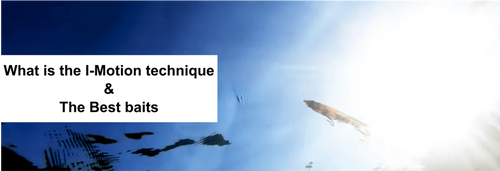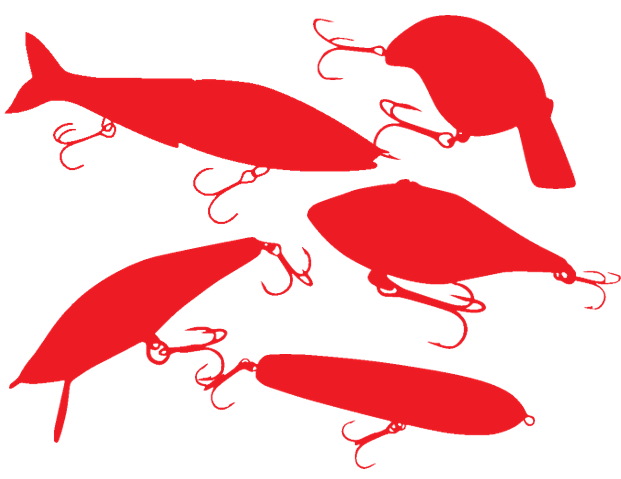Beginner-Friendly, Realistic i-Motion Bait for Easy Handling
1. The of i-Motion Technique: The Development Background of Nagisa
The i-Motion technique is favored by experts and stands alongside mid-strolling and hover-strolling as one of the least aggressive moving baits. Unlike other lures, it neither sways vertically nor horizontally; it simply returns straight to the angler upon retrieval. To the angler, it might seem unlikely to catch anything, yet, observing small fish swimming reveals they do not actively move their bodies much. Thus, the i-Motion bait meticulously imitates the vulnerable swimming patterns of small fish.
Though it may appear easy to handle since it primarily requires just retrieval, the i-Motion bait category is exceptionally finesse and challenging. If bass are present, merely casting and retrieving can attract them to the lure. However, any slight deviation in the lure's movement, either vertically or horizontally, can make the bass easily disregard it. Therefore, it is crucial to keep the rod and line steady while paying close attention to the reeling speed.

2. The Unique Tail Fin Simplifies the i-Motion Technique
Jackall developed the Nagisa lure to make the i-Motion technique accessible even to beginners.

By integrating a stabilizer at the rear hook area, Nagisa provides a streamlining effect upon retrieval. This feature allows for a stable i-Motion action and consistent depth control, ensuring the lure performs reliably with no side-to-side wobble, regardless of the reeling speed or the angler's skill level.
You'll be undoubtedly surprised by its stability when you experiment with the technique of briefly accelerating the lure's speed to activate the bass's instinct to strike.
3. Undetectable Even at Just a Few inches - The Realistic Appearance That Fools Bass
The i-Motion technique often leads bass to chase the lure while maintaining a distance of just a few centimeters (or inches), making not only the movement but also the appearance of the lure critically important.

Therefore, Nagisa utilizes a soft elastomer material for the tail, which subtly vibrates to induce bites from bass in pursuit.


Moreover, the realism of the body and eyes has been meticulously pursued. The lure is coated to mimic the surface of a real small fish, and the eyes are designed to represent those of a dying fish floating on the water's surface. This attention to detail ensures that even at a distance of a few centimeters (or inches), bass will not be able to discern the lure from real prey.
4. Prime Season After the Spawn

While the Nagisa lure is always effective for targeting weakened surface fish, its standout season is from May to late June, during the post-spawn period. Bass that have just completed spawning are too tired to dive deep and tend to stay near the surface. Additionally, their reduced energy levels make them more likely to feed on smaller, easily caught fish. Therefore, Nagisa, with its capability to simulate a frail, natural bait on the surface, is ideally suited for matching the bait these bass are targeting.
5. Two Types of Nagisa: Choosing Between Original and Floating
Nagisa comes in two variations: the original suspending model, designed for use down to a depth of approximately 15 cm (6 inches) below the water surface, and the floating model, primarily intended for surface fishing.
For beginners in the i-Motion technique, it's recommended to start with the suspending model of Nagisa to experience the essence of i-Motion. When you want to use techniques like the 'leave it alone method' (letting the lure sit still to attract bass) or drift fishing (allowing the lure to float) with the current), choose the floating model.
6. Closing the Deal with "Pikupiku" When Chasing Falls Short
i-Motion fishing is an exciting technique where, as long as you cast in the right spot, you'll often experience intense bass chases. However, even with Nagisa's top performance, there may be times when you can't get the bass to commit in the last few centimeters (inches). That's where Jackall recommends the Pikupiku lure. Pikupiku is designed for the so-called Pikupiku method and imitates a dying fish that stays in one place and twitches. If you've been searching with Nagisa and have a bass chase, switching to Pikupiku increases your chances of hooking those surface-feeding bass without a doubt.
- Condition: Brand New
- Length: 65 mm (2.6 inch)
- Weight: 3.8 g (0.1 oz.)

(*depend on country as below)
– Middle East : 9 working days*
– Oceania : 3 to 6 working days*
– Asia 1 to 6 working days*

The largest stock
View All

Reliable quality


![NAGISA 65SP [Brand New]](http://jpnfishingtackle.com/cdn/shop/files/4525807201758_1_e9c81efc-8828-409e-8ce4-5c2861141e55_{width}x.png?v=1718951594)
![NAGISA 65SP [Brand New]](http://jpnfishingtackle.com/cdn/shop/files/4525807201765_1_889e766e-82a7-4990-9b7e-1e67bc25acbd_{width}x.png?v=1718951594)
![NAGISA 65SP [Brand New]](http://jpnfishingtackle.com/cdn/shop/files/4525807201772_1_1222bdce-4e6f-4087-92b7-a26e74110837_{width}x.png?v=1718951594)
![NAGISA 65SP [Brand New]](http://jpnfishingtackle.com/cdn/shop/files/4525807201840_1_e058f7bb-283e-4284-91b5-a0e8862cde81_{width}x.png?v=1718951594)
![NAGISA 65SP [Brand New]](http://jpnfishingtackle.com/cdn/shop/files/4525807201833_1_1a08bf36-91ff-4fd9-b3df-3940fc0d7101_{width}x.png?v=1718951594)
![NAGISA 65SP [Brand New]](http://jpnfishingtackle.com/cdn/shop/files/4525807201789_1_2b21180b-295f-475b-9e93-f097efd47670_{width}x.png?v=1718951594)
![NAGISA 65SP [Brand New]](http://jpnfishingtackle.com/cdn/shop/files/4525807201826_1_24a8d696-bbc6-49e0-b566-ac7aee0dbd63_{width}x.png?v=1718951594)
![NAGISA 65SP [Brand New]](http://jpnfishingtackle.com/cdn/shop/files/4525807201819_1_0b93214a-a969-4ca5-aec9-c08c2b0aadd0_{width}x.png?v=1718951594)
![NAGISA 65SP [Brand New]](http://jpnfishingtackle.com/cdn/shop/files/4525807201796_1_e26893b6-f4aa-4981-b2ff-4c2e6e9f125a_{width}x.png?v=1718951594)
![NAGISA 65SP [Brand New]](http://jpnfishingtackle.com/cdn/shop/files/4525807201802_1_4b5a9c5e-04c0-4506-b3f4-b84f0e52dde8_{width}x.png?v=1718951594)
![NAGISA 65SP [Brand New]](http://jpnfishingtackle.com/cdn/shop/files/4525807201758_1_e9c81efc-8828-409e-8ce4-5c2861141e55_160x160.png?v=1718951594)
![NAGISA 65SP [Brand New]](http://jpnfishingtackle.com/cdn/shop/files/4525807201765_1_889e766e-82a7-4990-9b7e-1e67bc25acbd_160x160.png?v=1718951594)
![NAGISA 65SP [Brand New]](http://jpnfishingtackle.com/cdn/shop/files/4525807201772_1_1222bdce-4e6f-4087-92b7-a26e74110837_160x160.png?v=1718951594)
![NAGISA 65SP [Brand New]](http://jpnfishingtackle.com/cdn/shop/files/4525807201840_1_e058f7bb-283e-4284-91b5-a0e8862cde81_160x160.png?v=1718951594)
![NAGISA 65SP [Brand New]](http://jpnfishingtackle.com/cdn/shop/files/4525807201833_1_1a08bf36-91ff-4fd9-b3df-3940fc0d7101_160x160.png?v=1718951594)
![NAGISA 65SP [Brand New]](http://jpnfishingtackle.com/cdn/shop/files/4525807201789_1_2b21180b-295f-475b-9e93-f097efd47670_160x160.png?v=1718951594)
![NAGISA 65SP [Brand New]](http://jpnfishingtackle.com/cdn/shop/files/4525807201826_1_24a8d696-bbc6-49e0-b566-ac7aee0dbd63_160x160.png?v=1718951594)
![NAGISA 65SP [Brand New]](http://jpnfishingtackle.com/cdn/shop/files/4525807201819_1_0b93214a-a969-4ca5-aec9-c08c2b0aadd0_160x160.png?v=1718951594)
![NAGISA 65SP [Brand New]](http://jpnfishingtackle.com/cdn/shop/files/4525807201796_1_e26893b6-f4aa-4981-b2ff-4c2e6e9f125a_160x160.png?v=1718951594)
![NAGISA 65SP [Brand New]](http://jpnfishingtackle.com/cdn/shop/files/4525807201802_1_4b5a9c5e-04c0-4506-b3f4-b84f0e52dde8_160x160.png?v=1718951594)

